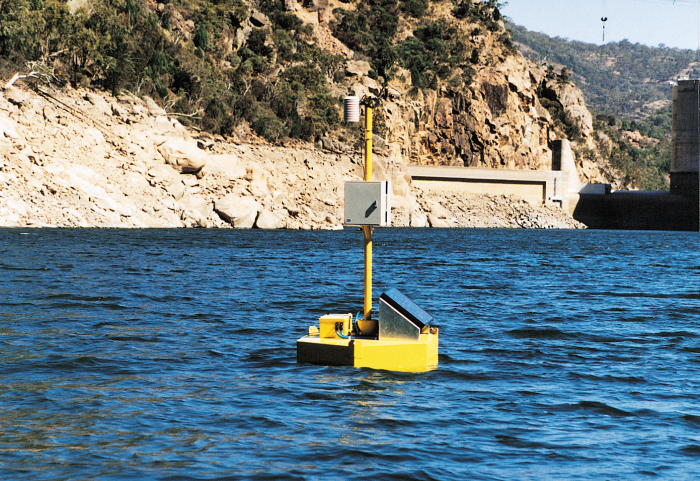


200年に1度しか考えられないような出来事は、記録する価値があります。 異常気象のように予測不可能な出来事の場合は、限りなく多くのデータを収集し、記録を正確にする必要があります。
なぜなら、世界中の大学、気象局、その他の機関は、信頼性が高く、正確で、意味のあるデータが必要なときに、Campbell Scientificの機器に頼るのです。 そして、それが、オーストラリアのタウンズビル境界で 1998 年に発生したサイクロン シドの残り波が、一生に一度の嵐以上のものとして記憶されている理由です。シドはタウンズビルの50マイル北の海岸を横切りました。
シドはゆっくりと移動するカテゴリー1のサイクロンで、風による被害はほとんどありませんでした。 しかし、陸地に入ると低気圧になり、タウンズビルと周辺地域を水浸しにしました。 一晩で650 mm (25.6インチ) を超える雨がこの地域に降りました。 タウンズビルのロスリバーダム (容量214,000メガリットルまたは56,500百万ガロン)水位は、わずか 1 日余りで、容量の 72% から放水路の壁から 2.5 メートル (8.2 フィート) まで上昇しました。歴史的な出来事だと言うのは簡単ですが、証明できるでしょうか?
サイクロン シドが上陸する 12ヶ月余り前に、地方議会はダムの蒸発率と水温を監視する自動気象観測所の購入を決定しました。タウンズビル地域の年間蒸発率は約 2.5 メートル (8.2 フィート)で、特に供給量が減少している場合には、市水供給を管理する上で測定が目安です。また、藻類の大量発生につながる温度逆転を水供給技術者が検出できるように、水温適切の測定も必要でした。
Campbell Scientific オーストラリアとニューサウス ウェールズ州土地水資源保全局は、風速と風向、湿度、日射、降雨量、気温と水温を測定できるブイ搭載型自動気象観測所の設計、供給、設置に協力しました。 気象観測所は、ブイの上の3メートルの支柱に取り付けられ、サーミスタは地表から12メートル下まで伸びるチェーンに取り付けられていました。音声合成モデムと携帯電話が取り付けられ、浮遊式観測所に音声とコンピューターの両方でアクセスできるようになりました。「メインイベント」が進むまでに、12か月分のデータが定期的に収集されました。
1月10日土曜日の夜8時までに、雨量は1時間あたり100mm(4インチ)の速度で降り始め、翌朝7時まで徐々に減少しました。数時間かけて強風と豪雨に見舞われましたが、CR10Xは、間もなく歴史的なデータとなるデータを苦労して収集しました。一日後、携帯電話の長時間の使用とずっと雲の監視のため、バッテリー供給電圧が携帯電話の電源に必要な最低12ボルトを下回り、十分な日光が戻るまで通信が途絶えませんでした。しかし、CR10Xデータロガーは、この重大な出来事の間、そしてその後も継続的にデータ記録を維持しました。
サイクロン・シドはその後のために記録されました。平均200年に一度発生する嵐の出来事であり、現在および将来の計画のための貴重な知識源となっています。
オーストラリアの測定の内側
ロス川ダムの浮体式気象観測所は、カウンターウェイトと滑車のシステムによって貯水池の底に固定されており、浮力を選択しながら横方向の位置を固定しています。ブイに取り付けられたジンバルブロックのおかげで、激しい波の中でもマストは垂直のままです。水面下では、ミスタチェーンがブイから吊り下がり、水深12ブイ上部の計測機器には、生データを記録して保存し、蒸発率も計算するようにプログラムされた Campbell Scientific CR10X データロガーが含まれています。